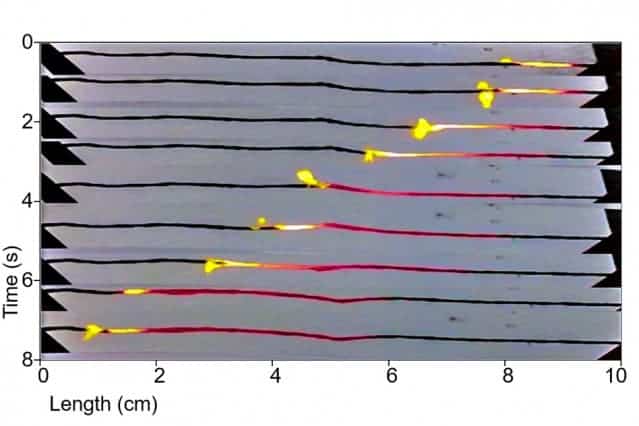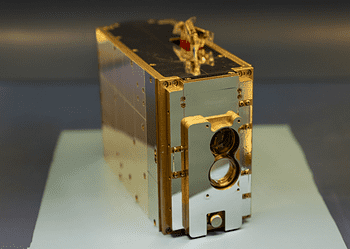Lithium, the stuff the battery in your smartphone or notebook are made of, is a toxic substance and in short supply. It’s pretty clear it’s not a sustainable solution to our mobile power generation needs. One alternative explored by researchers at MIT uses carbon nanotubes, which are non-toxic and non-metallic. The carbon nanotube battery also works fundamentally different. Instead of converting chemical energy into electricity, the system developed at MIT harnesses heat.

Michael Strano, a chemical engineering professor at MIT, and colleagues first learned that the tiny carbon cylinders can produce an electrical current by heat alone in 2010. They coated the tiny tubes with a combustible material and let it progressively burn by lighting one of the ends, just like a fuse. The current produced then was minuscule, but the proof of concept got everyone pretty excited.
Five years later Strano’s lab has dramatically upped the efficiency of the process, by nearly 10,000 percent.
The researchers now also have a better grip of the underlying mechanism of this previously encountered physical phenomena. This energy conversion occurs, Strano says, because pulses of heat push electrons through the bundle of carbon nanotubes, which are highly electrically conductive. The electrons are carried along a carbon nanotube wire like surfer rides a wave. This themopower wave is divided into two separate components that may reinforce one another or counter each other. That’s why heat produces a single voltage, but sometimes it produces two different voltage regions at the same time, as the MIT researchers witnessed.
A battery that’s on fire might not seem like a good idea to power the same phone you keep in your pocket. This time around though, the researchers use a benign fuel to drive the heat: sucrose. Most of us know it as table sugar.
So far, the device is 1% percent efficient and tests showed it can light LEDs or power smaller electronic devices. Pound for pound though, the ‘fuse battery’ provides power in the same ballpark as today’s most efficient lithium-ion batteries.
Here are some other advantages:
- Virtually unlimited shelf life, which would make the battery ideal for space probes that need to keep power reserves dormant until the time is nigh.
- It’s completely scalable, unlike conventional batteries which can be minituarized. The fused battery can be as small as a toe nail or as big as a house.
- It works just on heat and is non-dependent on any chemical formulation.
- You can get quick and powerful boosts of power that are not possible using conventional batteries. The thermopower wave systems can be used for powering long-distance transmission units in micro- and nano-telecommunication hubs, says Kourosh Kalantar-Zadeh, a professor of electrical and computer engineering at RMIT University in Australia, who was not involved in this research.
There’s also a lot of room to grow. It took 25 years for lithium-ion batteries to get to where they are today, Stano says. The professor hopes their research might inspire other groups to explore other fuels besides sucrose, for instance, and turn this into something even more efficient.
Findings appeared in the journal Energy & Environmental Science.






